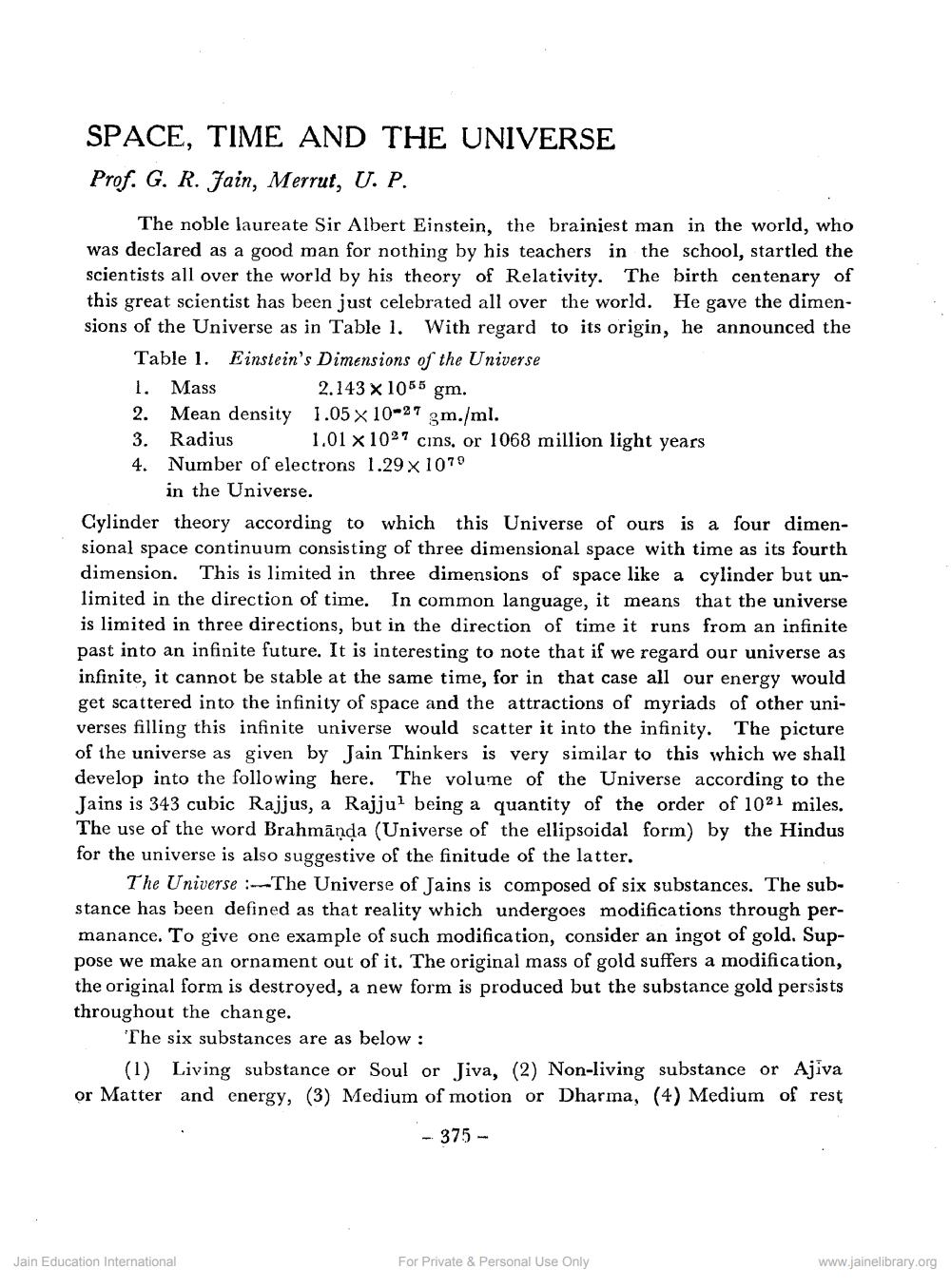Book Title: Space Time and The Universe Author(s): G R Jain Publisher: Z_Kailashchandra_Shastri_Abhinandan_Granth_012048.pdf View full book textPage 1
________________ SPACE, TIME AND THE UNIVERSE Prof. G. R. Jain, Merrut, U. P. The noble laureate Sir Albert Einstein, the brainiest man in the world, who was declared as a good man for nothing by his teachers in the school, startled the scientists all over the world by his theory of Relativity. The birth centenary of this great scientist has been just celebrated all over the world. He gave the dimensions of the Universe as in Table 1. With regard to its origin, he announced the Table 1. Einstein's Dimensions of the Universe 1. Mass 2.143 x 1055 gm. 2. Mean density 1.05 x 10-27 gm.ml. 3. Radius 1,01 x 1027 cms, or 1068 million light years 4. Number of electrons 1.29 x 1070 in the Universe. Cylinder theory according to which this Universe of ours is a four dimensional space continuum consisting of three dimensional space with time as its fourth dimension. This is limited in three dimensions of space like a cylinder but unlimited in the direction of time. In common language, it means that the universe is limited in three directions, but in the direction of time it runs from an infinite past into an infinite future. It is interesting to note that if we regard our universe as infinite, it cannot be stable at the same time, for in that case all our energy would get scattered into the infinity of space and the attractions of myriads of other universes filling this infinite universe would scatter it into the infinity. The picture of the universe as given by Jain Thinkers is very similar to this which we shall develop into the following here. The volume of the Universe according to the Jains is 343 cubic Rajjus, a Rajju? being a quantity of the order of 1021 miles. The use of the word Brahmānda (Universe of the ellipsoidal form) by the Hindus for the universe is also suggestive of the finitude of the latter. The Universe :--The Universe of Jains is composed of six substances. The substance has been defined as that reality which undergoes modifications through permanance. To give one example of such modification, consider an ingot of gold. Suppose we make an ornament out of it. The original mass of gold suffers a modification, the original form is destroyed, a new form is produced but the substance gold persists throughout the change. The six substances are as below : (1) Living substance or Soul or Jiva, (2) Non-living substance or Ajiva or Matter and energy, (3) Medium of motion or Dharma, (4) Medium of rest - 375 - Jain Education International For Private & Personal Use Only www.jainelibrary.orgPage Navigation
1 2 3 4 5 6 7 8 9 10 11 12 13
